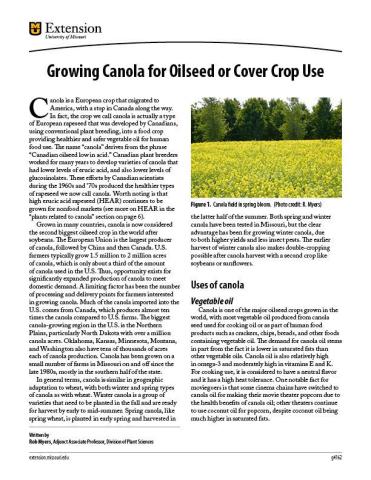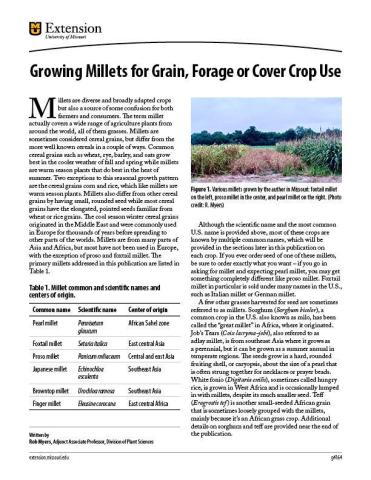

Missouri Weed Seeds, Page 27
Reviewed
Common members of Lamiaceae (Mint family) not shown in this guide are henbit and purple deadnettle, which are two of the most prevalent winter annuals in Missouri.
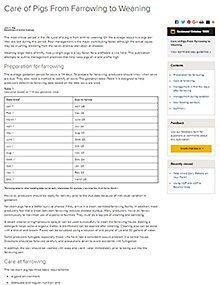
Care of Pigs From Farrowing to Weaning
Reviewed
The most critical period in the life cycle of a pig is from birth to weaning. Visit our website to learn about the Care of Pigs From Farrowing to Weaning.
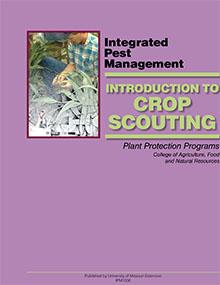
Introduction to Crop Scouting
Reviewed
Editor's note
The following abstract describes a publication that is available only as a downloadable PDF.
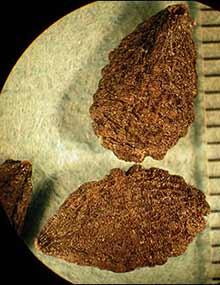
Missouri Weed Seeds, Page 30
Reviewed
Devil’s-claw, also known as unicorn plant, is the only known species of Martyniaceae (Unicorn-plant family) to be present in Missouri.

Pesticide Storage
Reviewed
Learn guidelines to ensure the safe and environmentally friendly storage of pesticides.
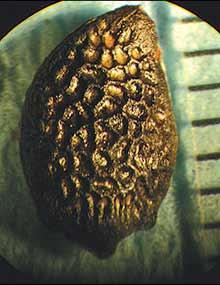
Missouri Weed Seeds, Page 33
Reviewed
Although about 18 genera of Passifloraceae (Passionflower family) are known, only one genus is known to be present in Missouri.
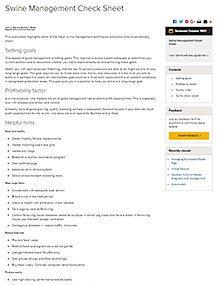
Swine Management Check Sheet
Reviewed
This publication provides a comprehensive checklist for swine producers, covering essential management practices from breeding to farrowing.
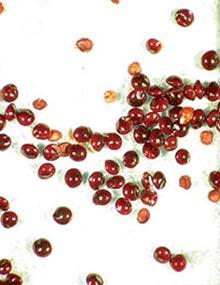
Missouri Weed Seeds, Page 04
Reviewed
In Missouri the amaranths (pigweeds) make up the vast majority of plant genera that occur within this family.
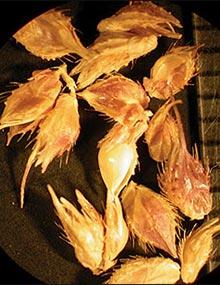
Missouri Weed Seeds, Page 36
Reviewed
About 270 species of Poaceae (Grass family), true grasses, are found in the state. Many species are economically important, including corn, wheat, sorghum, rye, fescue, oats, rice, barley and various millets.

Missouri Weed Seeds, Page 07
Reviewed
The Dogbane family (Apocynaceae) has relatively few members that occur in Missouri.

Missouri Weed Seeds, Page 39
Reviewed
Ranunculaceae (Buttercup family), a rather large group of plants, is best known for buttercups, of which there are nearly 20 species in Missouri. Clematis is another fairly common plant genus occurring in this family.

Missouri Weed Seeds, Page 10
Reviewed
Asteraceae, the aster family is the largest and most diverse family of broadleaf plants in Missouri. Its members include various species of goldenrod, sunflower and thistle.
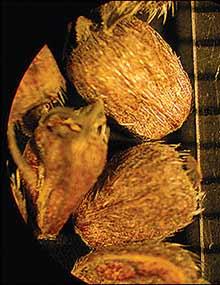
Missouri Weed Seeds, Page 42
Reviewed
Rubiaceae (Madder family) is a large family of plants with about 600 genera; there are about eight genera present in Missouri. The genus Galium is the largest in this state with at least 11 species, including a common winter annual, catchweed bedstraw.
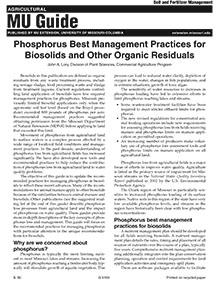
Phosphorus Best Management Practices for Biosolids and Other Organic Residuals
Reviewed
Learn practices to manage phosphorus in biosolids, minimize environmental impact, and protect water quality using updated nutrient management strategies.
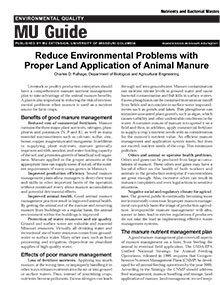
Reduce Environmental Problems With Proper Land Application of Animal Manure
Reviewed
Learn how to manage livestock manure to enhance soil health, reduce fertilizer costs, and protect water quality through proper application practices.
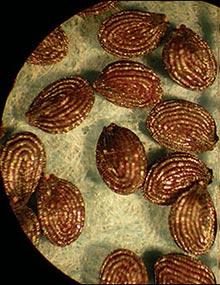
Missouri Weed Seeds, Page 13
Reviewed
Explore the Brassicaceae (Mustard) family, one of Missouri's largest plant groups, including common species like yellow rocket and wild mustard.
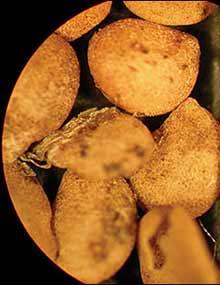
Missouri Weed Seeds, Page 45
Reviewed
This page details common weed species in Missouri's nightshade family, including seed images with millimeter rulers for scale.

Gases and Odors From Swine Wastes
Reviewed
Gases from swine waste, such as ammonia and hydrogen sulfide, can impact air quality and health in confinement facilities.

Managing Nitrogen to Protect Water Quality
Reviewed
How is nitrogen lost from the soil?Nitrogen is primarily lost by three pathways:
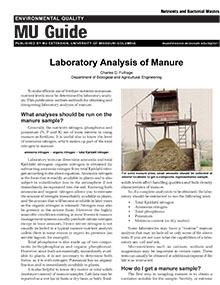
Laboratory Analysis of Manure
Reviewed
Laboratory analysis of manure determines nutrient levels—nitrogen, phosphorus, potassium—and moisture content for effective fertilizer use.

Missouri Weed Seeds, Page 16
Reviewed
Caprifoliaceae (Honeysuckle family) includes several species of honeysuckle, viburnum and elderberry.
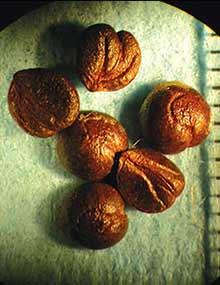
Missouri Weed Seeds, Page 48
Reviewed
Information about grape family weed seeds, including Virginia creeper and raccoon grape, with images and millimeter-scale references.
